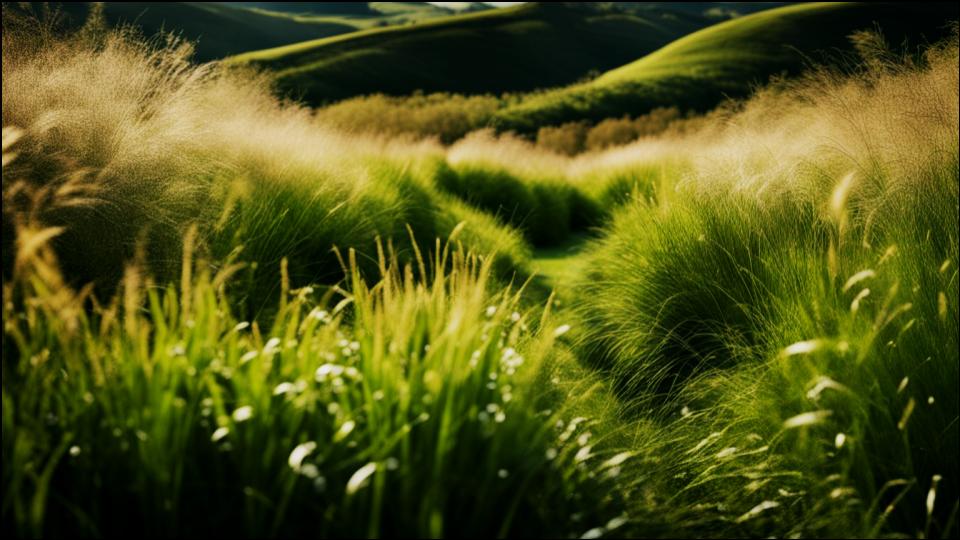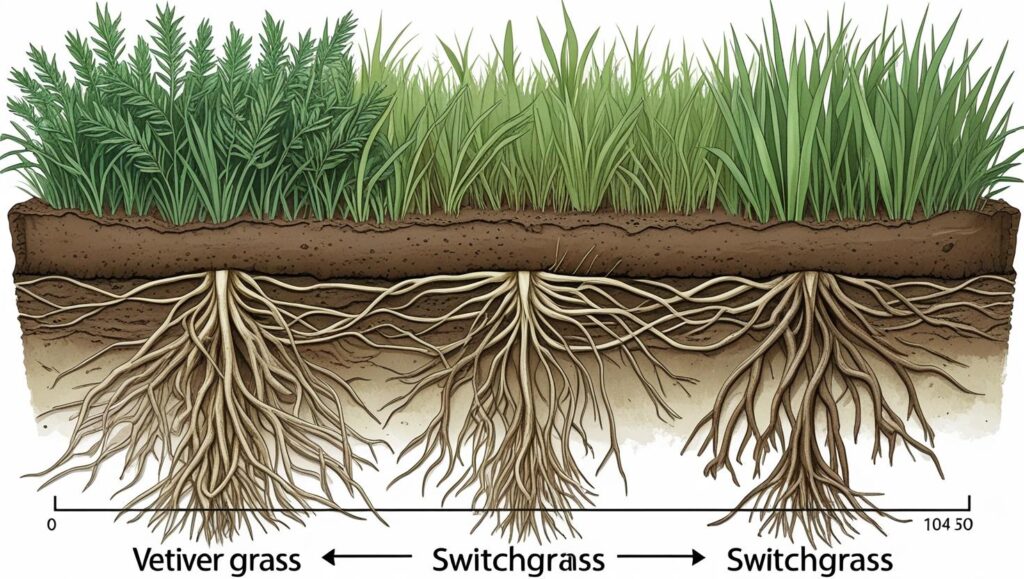
As communities worldwide grapple with the escalating threat of soil degradation, a fundamental, nature-based solution is gaining prominence: the strategic use of specific grasses to anchor soil and prevent erosion. With the United Nations Food and Agriculture Organization (FAO) issuing a stark warning that up to 90% of the planet’s topsoil is at risk by 2050, scientists and land managers are increasingly turning to the deep, fibrous roots of certain grass species as a first line of defense. These are the best grasses for erosion control, a critical tool in preserving agricultural land, protecting infrastructure, and maintaining ecosystem health.
The problem is severe. The FAO estimates that the equivalent of one soccer field of soil erodes every five seconds due to water or wind. This loss threatens food security, diminishes water quality by silting up rivers, and can exacerbate flooding and landslides. In response, agronomists and conservationists are promoting the use of vegetation for soil stabilization, a method that is both effective and environmentally sustainable.
“The principle is straightforward: keep the soil covered,” said Dr. Eleanor Vance, a soil scientist, in a statement to a conservation journal. “Grasses are exceptionally good at this. Their dense, fibrous root systems act like a net, holding soil particles together, while their foliage shields the ground from the erosive impact of raindrops and slows down water runoff.”
Understanding the Vegetative Shield
The effectiveness of a grass species in controlling erosion depends largely on its physical characteristics, particularly its root structure and growth habit. Experts from the U.S. Department of Agriculture’s Natural Resources Conservation Service (NRCS) categorize these grasses into two main types, each suited for different conditions.
Warm-Season Grasses: The Deep Anchors
Warm-season grasses, which thrive in summer heat and are often drought-tolerant, are lauded for their deep and extensive root systems. These grasses provide excellent long-term erosion prevention.
- Bermudagrass (Cynodon dactylon): A fast-growing, durable grass that spreads via runners (stolons and rhizomes), forming a dense mat. Its aggressive growth makes it ideal for quickly stabilizing large, sun-exposed areas like roadsides and construction sites.
- Switchgrass (Panicum virgatum): A tall, native North American prairie grass known for its remarkably deep roots, which can penetrate 10 feet or more into the ground. A report from the University of Nevada, Reno Extension highlights its value in creating strong soil anchors on vulnerable slopes.
- Buffalograss (Bouteloua dactyloides): Highly drought-resistant and low-maintenance, this grass is native to the Great Plains and excels in dry, sandy soils. It forms a thick turf that provides excellent ground cover against wind and water erosion.
Cool-Season Grasses: The Rapid Responders
Cool-season grasses grow most actively in the spring and fall and are valued for their ability to establish quickly, providing immediate cover on disturbed land.
- Perennial Ryegrass (Lolium perenne): Known for its rapid germination, it is often included in seed mixes to provide initial stabilization while slower-growing species take root.
- Tall Fescue (Festuca arundinacea): This species is adaptable to a wide range of conditions and possesses a deep root system for a cool-season grass, making it a versatile choice for waterways and sloped lawns.

Vetiver Grass: A Global Superstar in Soil Stabilization
Among the pantheon of erosion-fighting plants, one species is consistently singled out for its exceptional capabilities: Vetiver grass (Chrysopogon zizanioides). Promoted for decades by the World Bank, Vetiver is a non-invasive bunch grass that boasts a massive, deep, and finely structured root system that can grow downwards 10-13 feet (3-4 meters) in the first year alone.
“Vetiver acts like a living retaining wall,” explains a World Bank report on the “Hedge Against Erosion.” When planted in contour hedgerows, it forms a dense, porous barrier that slows runoff, filters out sediment, and allows more water to infiltrate the soil. Research has shown its roots have a high tensile strength, comparable to one-sixth that of mild steel, effectively reinforcing the soil mass on steep slopes. Its tolerance for extreme soil conditions, from acidic to alkaline, and its resistance to drought and flood make it a globally applicable solution.
The Critical Role of Native Grasses
While robust species like Bermudagrass are effective, conservation experts increasingly advocate for using native grasses for erosion prevention. Native species are, by definition, adapted to the local climate, soil types, and rainfall patterns, meaning they typically require less irrigation, fertilizer, and maintenance once established.
“Using native grasses provides a double benefit,” stated a recent bulletin from a University of Wisconsin-Madison Extension program. “Not only do they provide excellent erosion control, but they also restore local ecological function, creating habitat for pollinators and other wildlife.” Species like Blue Grama (Bouteloua gracilis) in the American West or Little Bluestem (Schizachyrium scoparium) in eastern prairies serve as powerful, low-input tools for sustainable land management.
Choosing the right grass requires a careful assessment of the site, considering factors such as climate, soil pH, slope angle, and the desired speed of establishment. For critical projects, land managers often use a mix of seeds, combining fast-germinating “nurse” crops like Perennial Ryegrass with permanent, deep-rooted species to ensure both immediate and long-term protection.
As land degradation continues to pose a global risk, the humble blade of grass stands as a powerful, accessible, and cost-effective ally. Its ability to hold our most precious resource—the soil—in place underscores the enduring power of nature-based solutions in a changing world.
